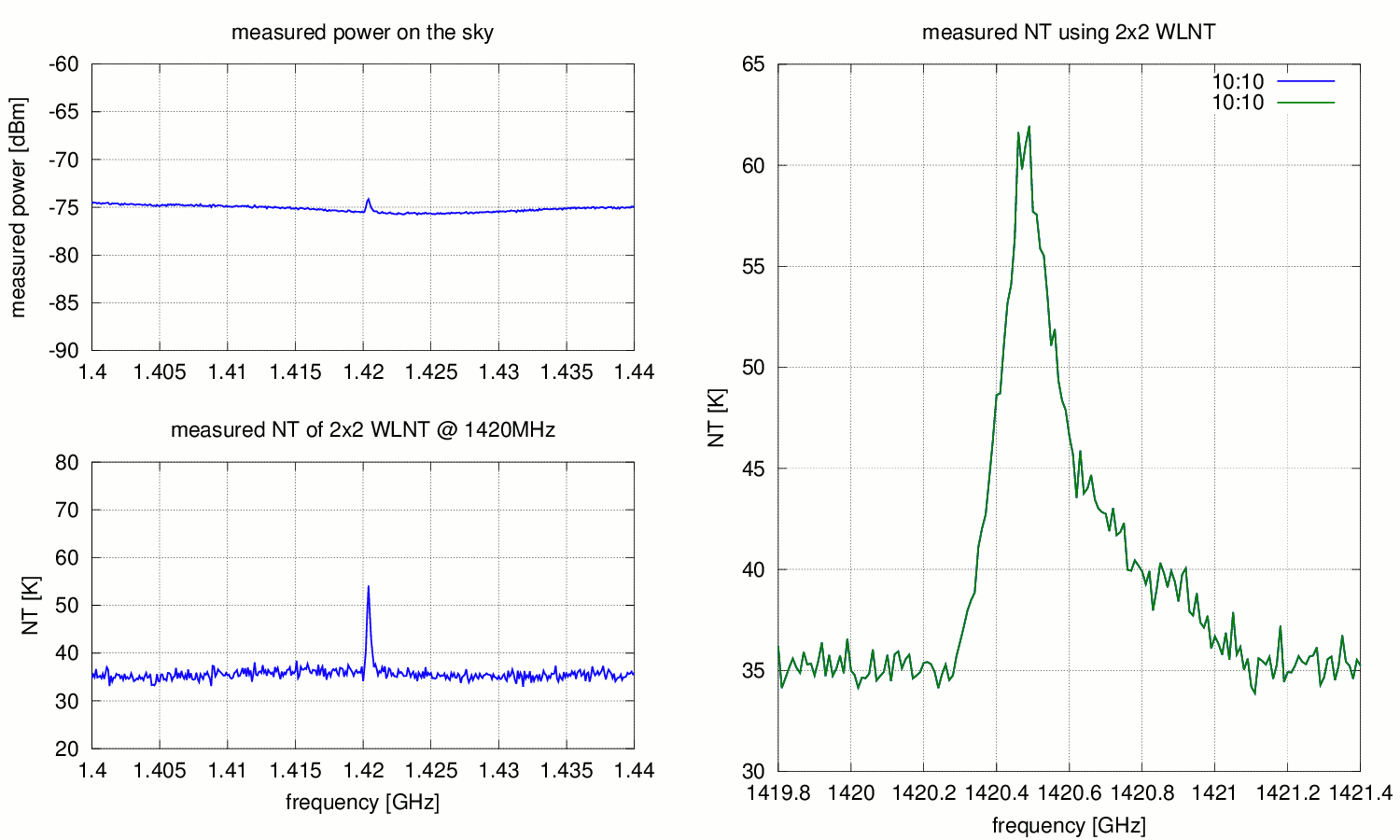Daily Image
29-04-2015The Wideband Low Noise Tile - A detection of the HI-line
| Submitter: | Bert Woestenburg, Roel Witvers |
| Description: | In our efforts to improve aperture array sensitivity, we struggle with RFI to reduce its effects as much as possible. Focusing on that task, we sometimes tend to forget what has already been achieved in terms of system sensitivity and capability to detect faint astronomical signals. Our present sensitivity is such that we even should be careful not to confuse low level RFI with astronomical signals. This is illustrated with the detection of the HI-line at 1420.4 MHz with our WLNT 2x2 array of 20 cm x 20 cm. With the sensitivity of the present system (Tsys 35-40 K), even with its almost 60 degrees beam, we are able to detect the HI-line with a total-power measurement on the sky in the direction of the center of the Milky Way. For this measurement we use our small low-noise aperture array, in combination with a spectrum analyzer as frequency sensitive power detector. The array is placed inside THACO, lowering RFI-levels and effectively reducing the broadside beam such that it is largely filled by the center of the Milky Way. Its output spectrum shows a 1.5 dB increase in total power at the location of the HI-line, corresponding with a noise temperature peak of 55 K. At other frequencies, at similar power levels, RFI and intermodulation products may be seen as well (see AJDI of April 13). The measurements during a day between 10 o'clock and 17.13 hrs, showing a changing line profile (see the animated picture), confirm that we measured the HI-line. It is interesting to compare our "detection" of the HI-line with the original measurement by Muller in 1951 (published in Tijdschrift NERG, 17, no.1, 1952, pp. 3-15). Muller used a 7.5 m diameter Wurzburg dish, and a receiver having a system noise temperature of 7000 K. The 1.6 degree beam was directed at the galactic center of our Milky Way, integrating for 12 seconds per frequency point and a total measurement time of 20 minutes. Our system has a 35 K noise temperature, a factor of 200 (23 dB) better, with a beam that almost fully covers the galactic center. This means that the effective areas (gains) of the antennas only play a marginal role in the comparison. Instead, system noise is the dominant factor. Muller's signal was buried in the noise at almost 23 dB, while our system shows a 1.5 dB peak above the noise, in an almost instant picture (0.4 seconds per frequency point). As a result it is much easier to detect small signals, including low-level RFI. This illustrates the progress in receiver sensitivity since the first detection of the HI-line. The latter was a significant achievement in its own right and puts our "struggle" with RFI in a different perspective . |
| Copyright: | ASTRON |
| Tweet |  |
